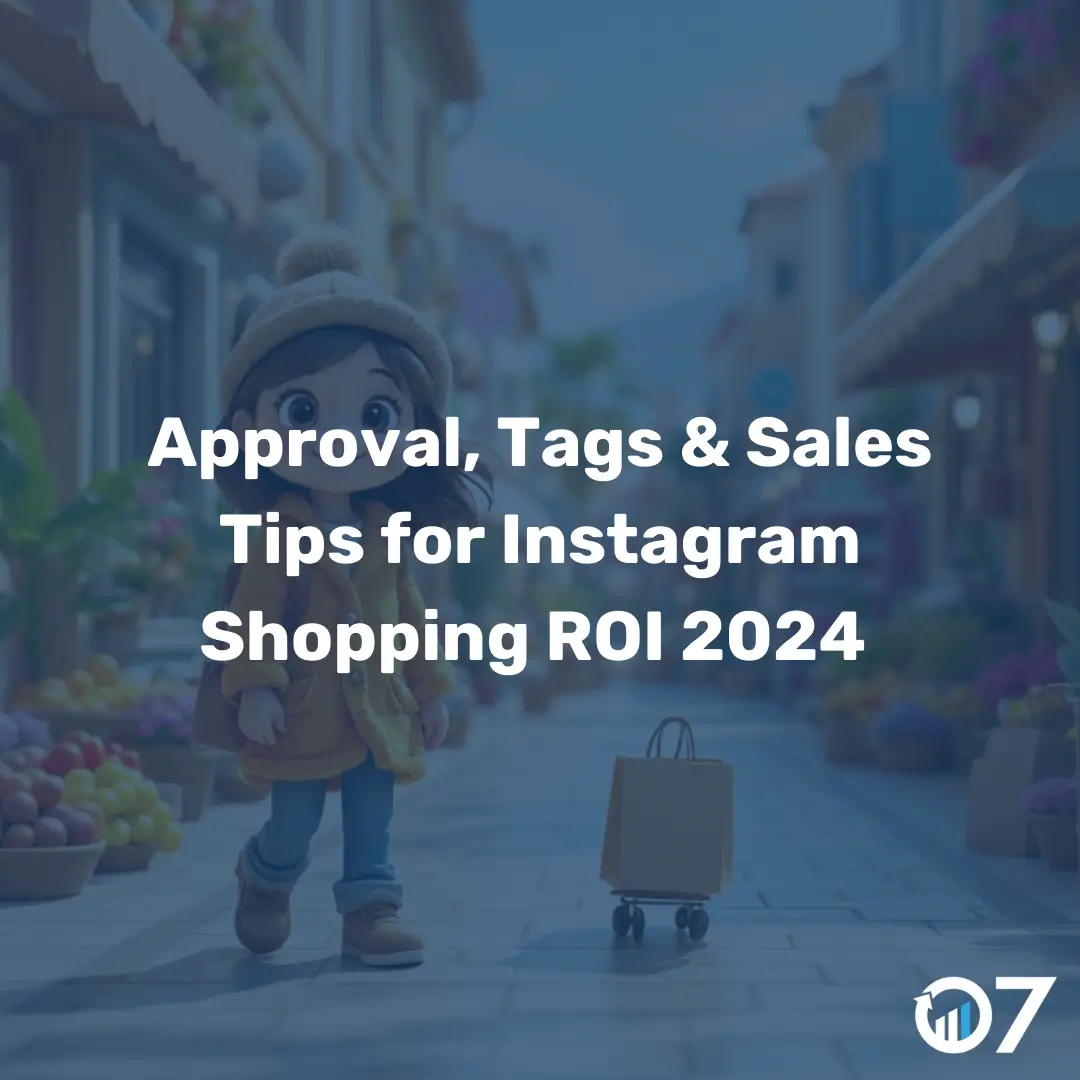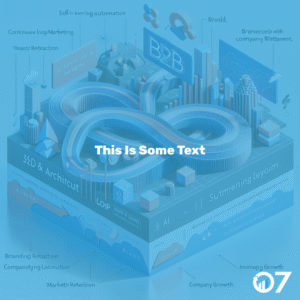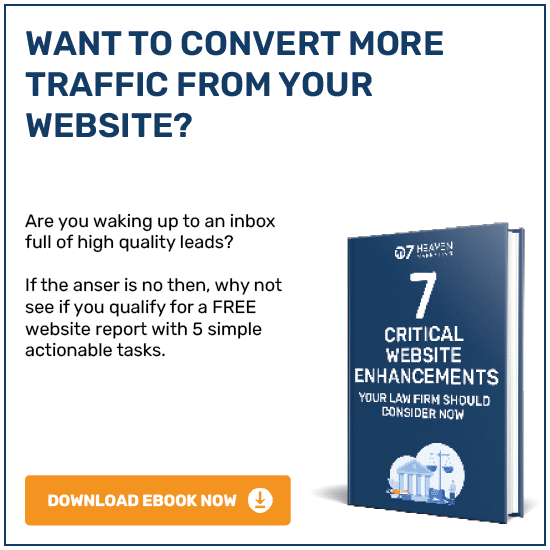Instagram Shopping ROI 2024 is a game-changer for businesses looking to boost their sales and engagement. If you want to know how to get approved, add product tags, and drive sales, read on!
Instagram has transformed from a platform for sharing filtered photos to a powerful business tool. Now, it’s a hub for building brand awareness, generating leads, and making sales.
But does Instagram Shopping really deliver on its promises? Let’s dive into new research to find out, and I’ll share some tips from my own experiences to help you get the most out of it.
Are Instagram Shopping tools effective in 2024?
Effectiveness varies based on your business goals and resources. Recent research shows that 37% of social media marketers saw 25-50% of viewers click through within the first 30 days of a shoppable post on Instagram.
About a third of these clicks led to purchases, while 40% resulted in non-purchase-related conversions like email subscriptions or content downloads. These numbers are promising and growing.
Clearly, Instagram Shopping can drive sales and nurture leads, but is it right for your business?
Should you use Instagram Shopping for your business?
The short answer is yes. Social selling is becoming a major profit driver. According to our 2024 Consumer Trends Report, social media is the top channel for product discovery for most consumers.
One in four users has bought something on a social app in the past three months. Additionally, 84% of marketers predict social media shopping will surpass third-party websites like Amazon as the preferred buying channel.
Modern consumers shop on their phones more than any other device, where they are also most engaged on social media. Therefore, it makes sense to combine these behaviours for a seamless shopping experience.
Instagram, with its significant cultural impact, is where billions of people hang out, learn, and connect with brands. It’s the world’s third-most popular social media platform and the second-most used for social purchases.
So, it’s certainly worth experimenting with. Plus, only about half of marketers today take advantage of Instagram shopping and social shopping in general, giving early adopters an edge.
Benefits and Challenges of Instagram’s Shopping Tools
Pros and Benefits of Instagram Shopping
1. Product Discoverability
The biggest benefit of using Instagram’s shopping tools is increased product discoverability. Instagram welcomes around 2 billion monthly active users, and 62.7% of them follow or research brands on the app.
2. Better Shopping Experience
Instagram allows users to discover and purchase products without leaving the app, providing a more enjoyable process for consumers, which can lead to more sales.
Additionally, Instagram’s “save” feature lets users save products they’re interested in and be notified if they go on sale.
3. Easier Influencer Collaboration
Influencers can tag products in their posts or Reels, sending traffic directly to the brand’s Shop page, which can boost sales and brand visibility.
Cons and Challenges of Instagram Shopping
1. Fees
One of the biggest challenges for marketers is the fees associated with Instagram’s shopping tools. Instagram’s selling fees are currently 5% per shipment or a flat fee of £0.40 for shipments of £8.00 or less.
2. Loss of User Data
When Instagram serves as the end-to-end sales platform, brands can lose valuable data that could inform future strategies, such as browsing behaviour.
Can Instagram Shopping be your only sales channel?
Our research found that Instagram Shopping was the sole ecommerce platform for many brands. 41% of marketers surveyed said most of the brands they work with use Instagram’s shopping tools exclusively.
One in four marketers said launching a product exclusively on Instagram is effective due to high discoverability and ease of purchase. However, 15% said it’s worse than launching elsewhere.
Test the waters first. If you meet all prerequisites, have the means to maintain your Shop, and can afford the fees, try listing your products to see if it boosts sales.
How to Get Approved for Instagram Shopping
To get approved for Instagram Shopping, follow these steps:
1. Make sure you meet all of the prerequisites.
Your business must be located in a supported market, comply with Instagram and Facebook’s Commerce Policies, have a business account linked to a Facebook Page, have a website, and have “check out on Facebook and Instagram” enabled.
Focus on growing your follower numbers before applying, as you need at least 100 followers on your Instagram or Facebook page to be eligible for Instagram Shopping.
2. Submit your product catalog.
Create a product catalog in the Meta Commerce Manager to connect to your Instagram. This catalog can be manually added or pulled from another platform like Shopify or BigCommerce.
3. Turn on Shopping features.
After your catalog has been reviewed and approved, turn on your Instagram shopping features by going to your Instagram business profile, tapping the hamburger menu, hitting “Settings,” then “Business,” and “Shopping.”
Instagram Product Tagging
Now, you can start adding Instagram product tags to your content. Tagging is the easiest way to ensure people find your products. Brands that use product tags generate 37% more sales than those that don’t.
How to Add Instagram Product Tags
You can add Instagram product tags to feed posts/carousels, Stories, and Videos/Reels.
1. How to Tag Products in Instagram Feed Posts
- When creating a feed post, tap “Tag Products” to open the tagging menu.
- Tap on the object you’d like to add product tags to.
- Search your catalog to find the product you want to tag.
- Select the product(s).
- Tap “Done.”
2. How to Tag Products in Instagram Stories
- When creating a story, tap the sticker icon.
- Tap the “Product” sticker and select the product you want to tag.
- Publish your story.
3. How to Tag Products in Reels/Videos
- Once you’ve recorded your reel, tap “Tag Products.”
- Add the products or collections you want to feature.
- Tap “Done.”
Savvy Tips for Getting the Best of Instagram Shopping ROI
1. Optimize your product detail pages (PDP).
Include the details buyers need to know to make a smart purchase decision in your descriptions, like pricing, product size, materials, uses, and shipping/return details.
2. Include high-quality images and videos.
Make your visuals clear, detailed, and visually appealing. The visuals on your product page are the only chance for buyers to get an idea of what they’re buying.
3. Work with influencers and customers to tag products.
Collaborate with influencers your audience loves to promote and tag your products in their content. This helps you reach new audiences and increase sales.
4. Set up collections (aka categories).
Use collections to group products by themes, like new arrivals, gifts, seasonal trends, and collaborations. This keeps your Instagram Shop organized and makes it easier for shoppers to navigate.
5. Be careful not to overlap tags.
Tag up to five products in your Instagram posts, but avoid overlapping them visually. Overlapping tags can look messy and make them harder to click.
6. Add Stories with product tags to Highlights.
Stories expire after 24 hours, so add any Stories that include product links to “Highlights” on your profile to maintain the content and links.
7. Promote your product content with ads.
If you have the budget, promote your product-focused content using Instagram ads. This lets you get specific about the audience you want to reach and pay to get your content in front of them.
Instagram Shopping ROI Conclusion
Shopping on Instagram is growing. If you’re an ecommerce business with funds and followers, use the tips outlined to get approved for Instagram Shopping and start seeing results. By doing so, you can maximize your Instagram Shopping ROI and boost your sales.
For more insights and tips, visit our blog or contact us via email at info@07hm.co.uk or telephone at 01702 410663.





